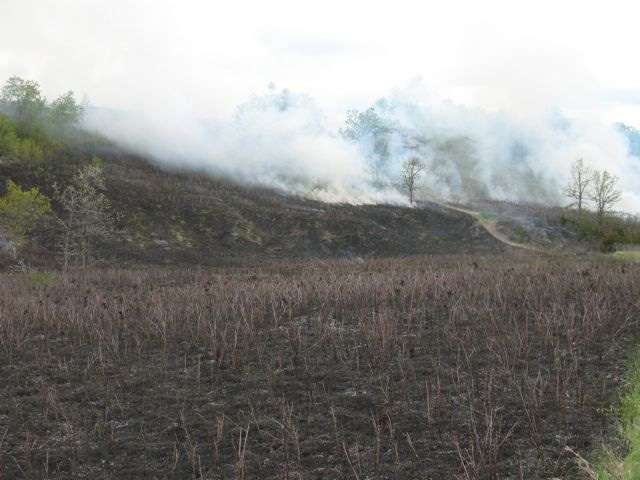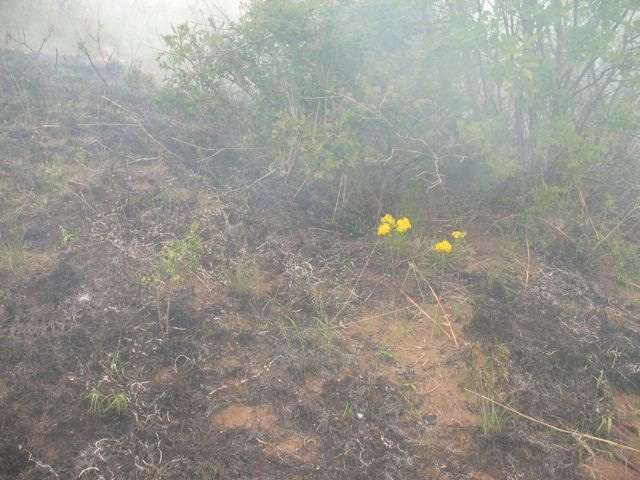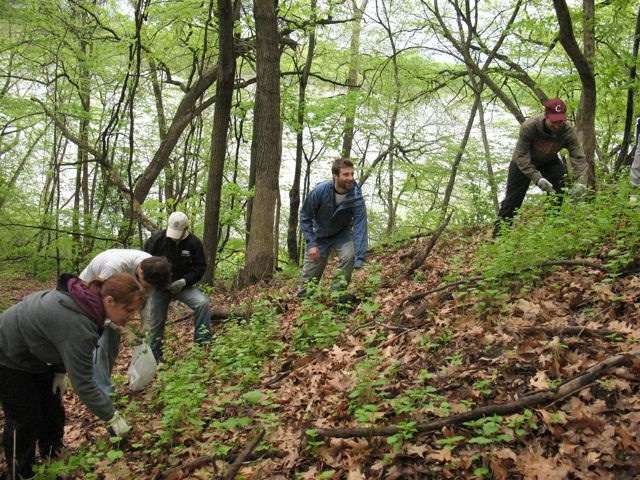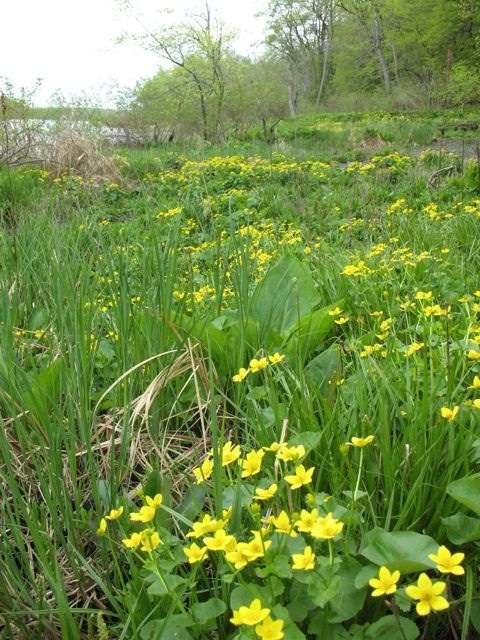Roasted garlic mustard and buckthorn pie Spring restoration update
Spring is burn season and this one was a real doozy. With an exceptionally early, warm, dry spring that just kept going, burn crews were able to complete all planned controlled burns at FMRs prairie restoration sites. A total of 85 acres of sand gravel prairies or grassland were burned between March 24th and May 6th. Burns took place at five locations: the Flint Hills Resources property in the Pine Bend Buffs, Hastings Sand Coulee SNA, Hastings Wildlife Management Area, the City of Hastings sand coulee property, and a private property in Ravenna township. Capable partners who helped accomplish this work were Great River Greening and Prairie Restorations, Inc.
Conducted every few years, regular burns help to reduce woody plants and some invasive species. The burns reduce the thatch, warm the soil, and recycle nutrients so natives grow more vigorously. While burning may temporarily set back native wildflowers, the vast majority quickly rebound. After a fire, they not only bloom more abundantly but also produce more viable seed, making post-burn seed collection particularly valuable.
Other restoration activities focused on invasive species control. Results from buckthorn treatment completed in January by Conservation Corps Minnesota just recently became apparent. The crews treated the stems of standing buckthorn with herbicide at a floodplain forest at Hastings River Flats City Park. (A volunteer restoration event will also take place at this site June 2nd). This method allowed the crews to cover nearly 40 acres at a fraction of the cost of cutting and treating. As live shrubs began to leaf out in April, treated stems did not, revealing the abundance of plants that succumbed. Buckthorn removal was also done at the site about five years ago, and while many small buckthorn plants have emerged to replace the trees that were removed, the stand has been dramatically reduced and control efforts significantly reduced.
Restoration efforts at Pine Bend Bluffs Scientific and Natural Area continued with a group of Home Energy Squad volunteers from the Neighborhood Energy Connection who spent three hours ridding a large hillside of garlic mustard. While the plant is too abundant overall to effectively control through hand-pulling, there are some areas of the site where it is still in small scattered patches. We hope to keep the mustard at bay until the insects being studied for biological control are available for release. The garlic mustard is really an indication of other disturbances, namely earthworms, which cannot be controlled and are the primary cause for the loss of native plant species at the site (for more about earthworms see this months phenology article elsewhere in this newsletter.) However, by reducing the mustard, we may allow the native species to adjust and re-establish in the earthworm-altered soils.
(Editors note: Volunteers also assisted at many invasive species removals in the Mississippi River Gorge. Read more about these efforts at Crosby park in St. Paul and the Minneapolis river flats on the River Gorge Stewards blog.)

In oak savannas, controlled burns help reduce small trees and shrubs so the oak trees are not crowded out.

Sumac, a valuable native shrub, can become too abundant on prairies that are not regularly burned.

A dead tree causes the fire to flare wildly for a few minutes.

Controlled burns are generally fairly "cool," allowing some plants, such at this hairy puccoon, to escape the flames. Succumbing neighboring plants will quickly rebound, flower more prolifically, and produce a greater quantity of viable seed.

Two weeks after a burn, this portion of the sand coulee is already quite green.

At Pine Bend Bluffs Scientific and Natural Area, Home Energy Squad volunteers from the Neighborhood Energy Connection pull small patches of garlic mustard at a hillside above the Mississippi River. Controlling small isolated patches may be a feasible way to keep the plant from spreading over the entire area.

Marsh marigold and skunk cabbage dominate the seepage swamp at the base of the slopes along the river at Pine Bend Bluffs.
Karen Schik, Restoration Ecologist and Project Manager